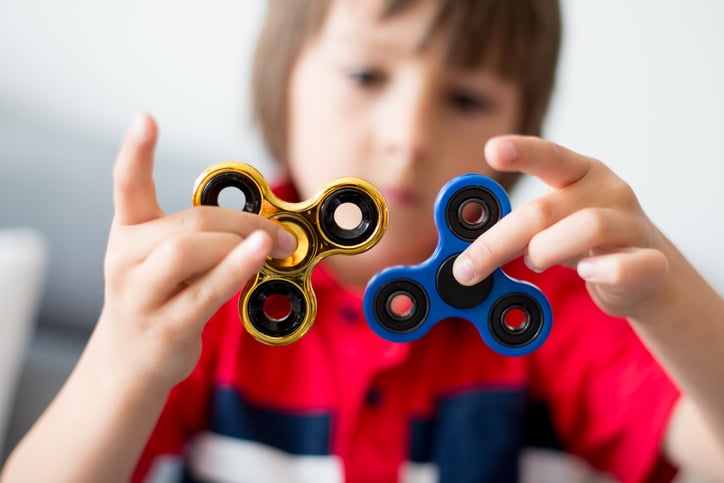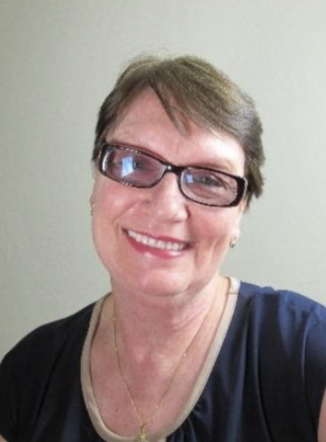How to Help a Talkative Autistic* Child to Talk Less and Listen More
Many children with autism develop special interests and become so entranced with them that they spend much of their time talking about them with great enthusiasm. Initially, it can be astounding to hear autistic individuals share their knowledge and expertise on topics such as dinosaurs, bus routes, video games, insects, and the list goes on. But when sharing this information takes place at the wrong time and in the wrong place, it can be disruptive and challenging to redirect them to listening and focusing on the tasks at hand.
How to Manage Special Interests
In a recent article, “Setting Meaningful and Achievable New Year’s Goals for Autism Parents and Caregivers” I mentioned that my grandson’s excessive talking about his "enthusiasms" sometimes aggravated his classmates, and there were other times as well when his enthusiastic banter took a little too long for unaware listeners who engaged in conversation with him.
At one point, talking about his interests became so disproportionate that his teacher wondered if it was time to impose some consequences because his talking disrupted the overall learning taking place while in class. It also affected his ability to make and keep friends. Hearing multitudinous facts about the arcade games of the 80s or Tamagotchis of the 90s even resulted in him being bullied a few times by some of his peers.
In his book, Uniquely Human, Dr. Barry Prizant talks extensively about special interests, or enthusiasms, as parents he interviewed called their daughter’s fixations. Rather than directing their daughter away from her interests, which changed frequently, these parents treated her with respect, assuming there was a reason for her fascination. Perhaps focusing on one topic gave the child a sense of control in a world that otherwise felt unpredictable and scary.

In the same book, Dr. Prizant suggests that discouraging and removing a special interest and trying to replace it with a more socially acceptable interest may dismantle a strategy the child is using to self-regulate and feel better about themselves—or worse, rob them of something that brings them joy. He suggests that using a special interest to motivate the child may be a better option to manage an autistic child’s special interest. And I couldn’t agree more!
My grandson has had many different interests over the years, from insects to toy cars to birds, to his current fascination with arcade games of the 80s. I’ve always tried to capitalize on and use his interests to teach him different things. When he was into insects at age 5, we used bug counters to teach him math, and toy cars were the preferred reward for completing tasks when he was 6 and 7 years old.
I never discouraged his interests, and as a result, to this day, in addition to talking about them, he has used his knowledge about his interests extremely creatively. Just recently, after researching the history of the arcade games of the 80s, he compiled an incredibly detailed and interesting 20-question quiz with multiple-choice answers. It took him days to type it out and describe the correct answers in amazing detail—all from memory!
Imposing consequences for talking about his current interests too much seemed hardly an option, if not impossible. Curbing his excessive talking about his "enthusiasms" and getting him to listen more was going to be a challenge, but I was convinced it could be done without discouraging him.
Here are some of the strategies I used with my grandson to help him talk less and listen more at school, and some additional ones you may be able to use with your child or student, too.
1. Set the time and place.
For younger children, include a certain time and place in their visual schedule to talk about or engage in their special interests. Indicate a clear beginning and end. Talk about and review their schedule with them daily, preferably at the start of the day. Praise them throughout the day for listening and paying attention to what is happening at the moment. When the scheduled time comes, engage wholeheartedly in their enthusiasm with them, giving them your full attention.
With older children or teens, discuss a set time and place for engaging in special interests with them and then incorporate it into their school rules or behavior contract. In the case of my grandson, he agreed that after school and at home was the time and place for him to talk about his arcade games. He asked me to review this rule with him every morning over breakfast for several weeks until he decided he no longer needed the reminder.
2. Do not respond during off-hours.
When your child or student starts making random comments about his "enthusiasms" when it has nothing to do with what is currently going on, try not to act perplexed and don’t respond. Instead, calmly redirect the child to what is going on and say, “This is not the time to talk about that right now.” If you see that the child becomes upset, ask a question that requires them to shift their attention and engage in the present activity or topic of conversation.
3. Praise on-point conversation.
Always praise your child or student for making conversation related to what is happening at the moment. Immediately respond with acknowledgment and praise. If your child or teenager is focusing on your lesson and makes a comment or asks a question related to the material you are teaching, commend them for paying attention and specifically reference the on-topic question or comment by repeating it in your response.

4. Use the topic of interest to motivate good behavior.
Buy a book, toy, or game associated with your child’s special interest and tell them that they can read or play with it when homework is completed or when they finish the task they were given. In my grandson’s case, he is allowed to talk about and play his arcade games after school during the week, and at the end of a good week at school, he often gets to play for a few hours on a favorite real arcade machine at a local restaurant during the weekend. This is often also a great opportunity for him to meet and socialize with others and practice the conversation skills we’ve been working on.
5. Use special interests to promote education.
For younger children, ask your child’s teachers to use the topic of interest to promote education. If, for example, your child likes insects, apply them to math ("If there are 10 beetles in the backyard now, and 5 more show up later, how many beetles will there be altogether?"). You can also print out worksheets on their interests, and use interest-related stickers for positive reinforcement. Use their specific interest as a starting point, and then build on it, slowly expanding the child’s areas of interest. Older children and teenagers could be encouraged to research their special interest, compare and contrast, or write an essay about it.
 It was not easy at first, but using some of these strategies with my teenage grandson was highly effective. I am happy to say that he complied and responded so well that his teacher reported his performance has been near perfect in all his classes this past month and that his excessive talking about his interests while at school has completely stopped. His interactions with his peers during their weekly community meetings have also improved.
It was not easy at first, but using some of these strategies with my teenage grandson was highly effective. I am happy to say that he complied and responded so well that his teacher reported his performance has been near perfect in all his classes this past month and that his excessive talking about his interests while at school has completely stopped. His interactions with his peers during their weekly community meetings have also improved.
Most autistic children develop special interests and may love talking about them. Special interests often have a purpose and therefore should be treated with respect. It is not easy to teach autistic children to talk less and listen more. However, with patience, love, and respect for the things that bring them joy, it is possible to teach them to focus on the tasks at hand, and to talk about their enthusiasms at the right time and in the right place.
Do you have any tips on how to help your child or student focus better? Please tell us in the comments section below.
We hope you enjoyed the information in this article. Stages Learning also offers free downloadable resources to support teaching and learning with individuals with autism. Start with our free Picture Noun Cards and see our collection of other downloadable resources here!

Ymkje Wideman-van der Laan
Ymkje Wideman-van der Laan is an author, public speaker, and Certified Autism Resource Specialist from the Netherlands. After working abroad as a teacher and humanitarian for 25 years, she moved to the US in 2006 and assumed the care of her then 6-month-old grandson, Logan. There were signs of autism at an early age, and the diagnosis became official in 2009. She has been his advocate and passionate about promoting autism awareness and acceptance ever since. Logan is the inspiration behind the Autism Is...? (tinyurl.com/5aj73ydd) series of children’s books she initially wrote for him and later published. Ymkje currently lives in California with her now 15-year-old grandson, and besides writing, presents autism training workshops for early childhood educators, parents, and caregivers. You can read more about her story in her newly released book, Autism on a Shoestring Budget, [Early] Intervention Made Easier (https://tinyurl.com/ysxhxbmf). For more information, you can visit www.autism-is.com, www.facebook.com/AutismIs, and/or contact her at autismisbooks@gmail.com.




